September 24, 2025

The article titled "10 Key Insights on Negative Punishment in ABA Therapy" presents a crucial understanding of the role and implications of negative punishment within Applied Behavior Analysis (ABA) therapy. Negative punishment, which entails removing a desirable stimulus to reduce undesirable behavior, can be effective when applied ethically and in conjunction with positive reinforcement strategies. This approach is supported by evidence of its ability to modify behaviors while emphasizing the importance of considering individual client needs and contexts.
Negative punishment in Applied Behavior Analysis (ABA) therapy presents a complex landscape where the removal of a valued stimulus aims to decrease undesirable behaviors. As the demand for effective behavioral interventions grows, understanding the nuances of this approach becomes increasingly crucial for practitioners.
How can behavior analysts ensure that the application of negative punishment not only achieves immediate compliance but also fosters a supportive therapeutic environment? This article delves into ten key insights on negative punishment, exploring its ethical implications, real-world applications, and best practices for implementation to enhance both behavioral outcomes and client well-being.
The demand for Board Certified Behavior Analysts (BCBAs) is projected to surge by an impressive 25% by 2026. In this expanding field of Applied Behavior Analysis (ABA) therapy, Hire ABA serves as a dedicated recruitment platform that connects BCBAs with premier job opportunities. As the need for qualified professionals grows, Hire ABA plays a crucial role in streamlining the hiring process for both job seekers and employers.
Designed to provide a supportive and efficient experience, our platform ensures candidates find positions that align with their skills and career goals. Through personalized resume assessments, we evaluate each candidate's experience and aspirations. Our advanced job fit scoring identifies opportunities that match their skills, preferences, and desired locations, enhancing the job matching process.
With over 65,300 job postings for BCBAs in 2023, Hire ABA is well-positioned to in a rapidly evolving landscape. Are you facing challenges in hiring qualified BCBAs? Consider how Hire ABA can address these issues effectively. Our tailored approach not only enhances job matching but also supports the professional growth of BCBAs in this vital sector. Join us today and take the next step in your recruitment journey.
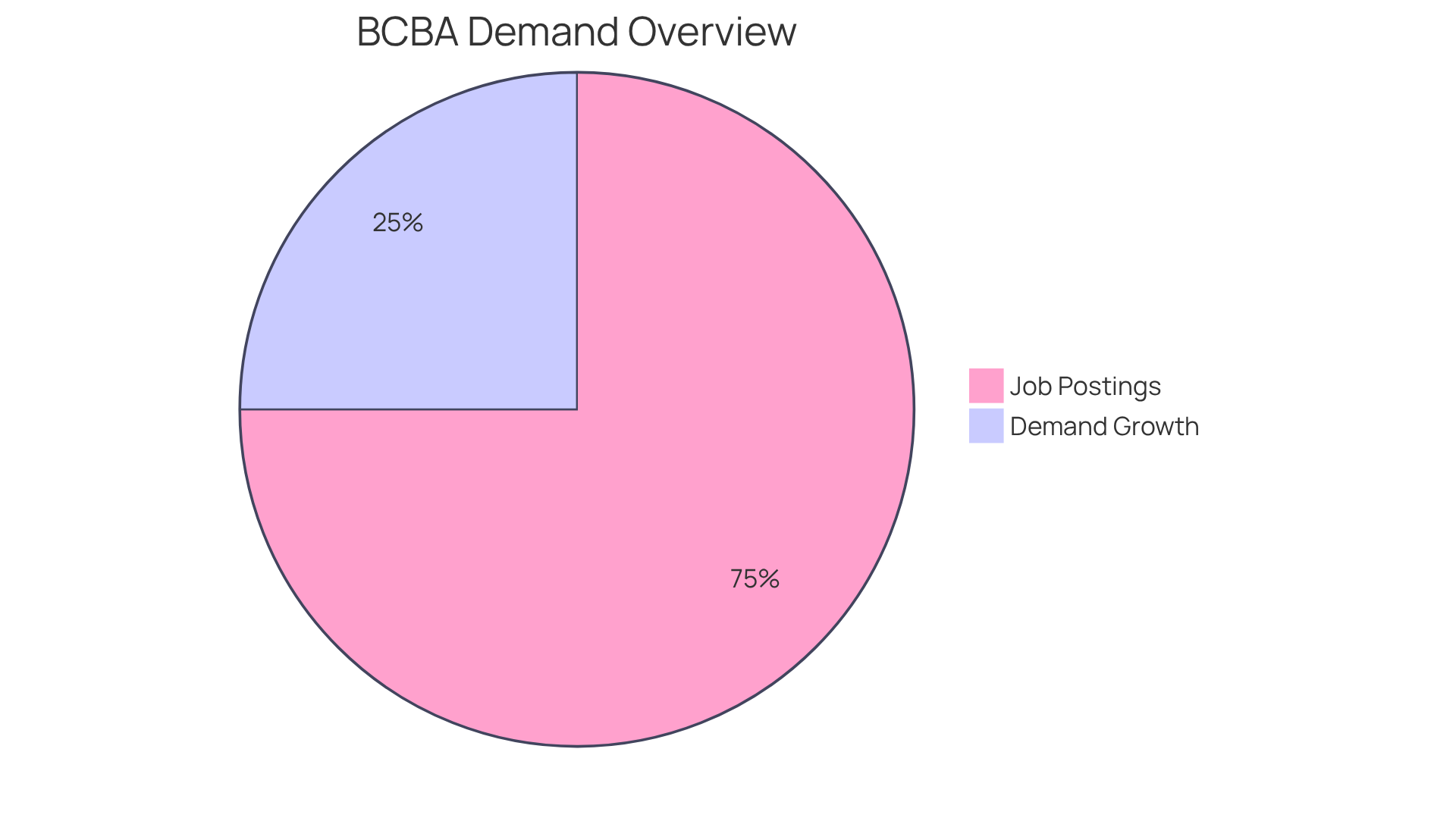
Negative punishment ABA involves the removal of a desirable stimulus following an undesired action, aiming to decrease the frequency of that action. For instance, when a child throws a toy, a therapist may take the toy away to discourage such behavior. This method is grounded in the understanding that negative punishment ABA, which involves losing something valued, can effectively reduce undesirable actions.
Skinner emphasized that the application of discipline must be assessed against its potential negative consequences, highlighting the importance of ethical considerations in its execution. Recent studies indicate that while adverse consequences can yield immediate results, behavior analysts increasingly advocate for their careful application. This underscores the necessity of reinforcing positive behaviors through rewards to achieve more effective long-term behavioral change.
Real-world applications of negative punishment ABA include:
Understanding these dynamics is essential for professionals to and effectively during therapy sessions.
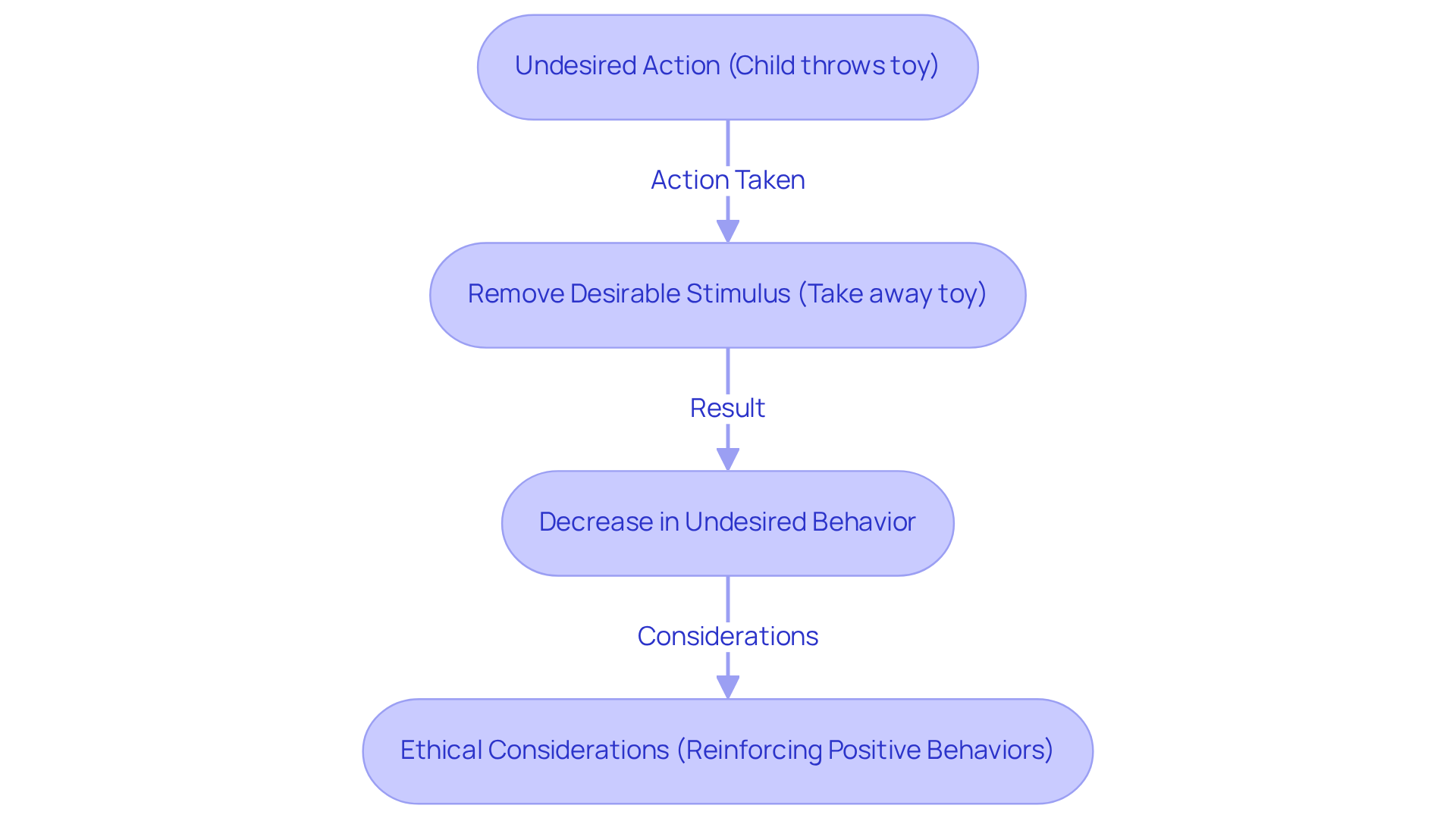
In ABA therapy, positive consequences involve introducing an unpleasant stimulus to reduce an action, such as scolding a young person for misconduct. Conversely, negative reinforcement entails withdrawing a pleasant stimulus to diminish undesirable actions, exemplified by taking away a toy after a young one misbehaves. Understanding these distinctions is crucial for professionals, as each approach possesses for altering conduct.
Recent discoveries indicate that while positive consequences can prompt instant compliance, they may inadvertently foster resistance and low self-worth in young individuals. On the other hand, negative punishment in ABA, when applied ethically, can effectively instill accountability by linking actions to repercussions, such as losing privileges for disruptive behavior.
Experts underscore that the selection between these techniques should be informed by the specific context and individual needs of the child, emphasizing the importance of cultivating a supportive environment. The successful implementation of these strategies can significantly enhance therapy outcomes, making it imperative for analysts to remain informed about current trends and best practices in corrective techniques.
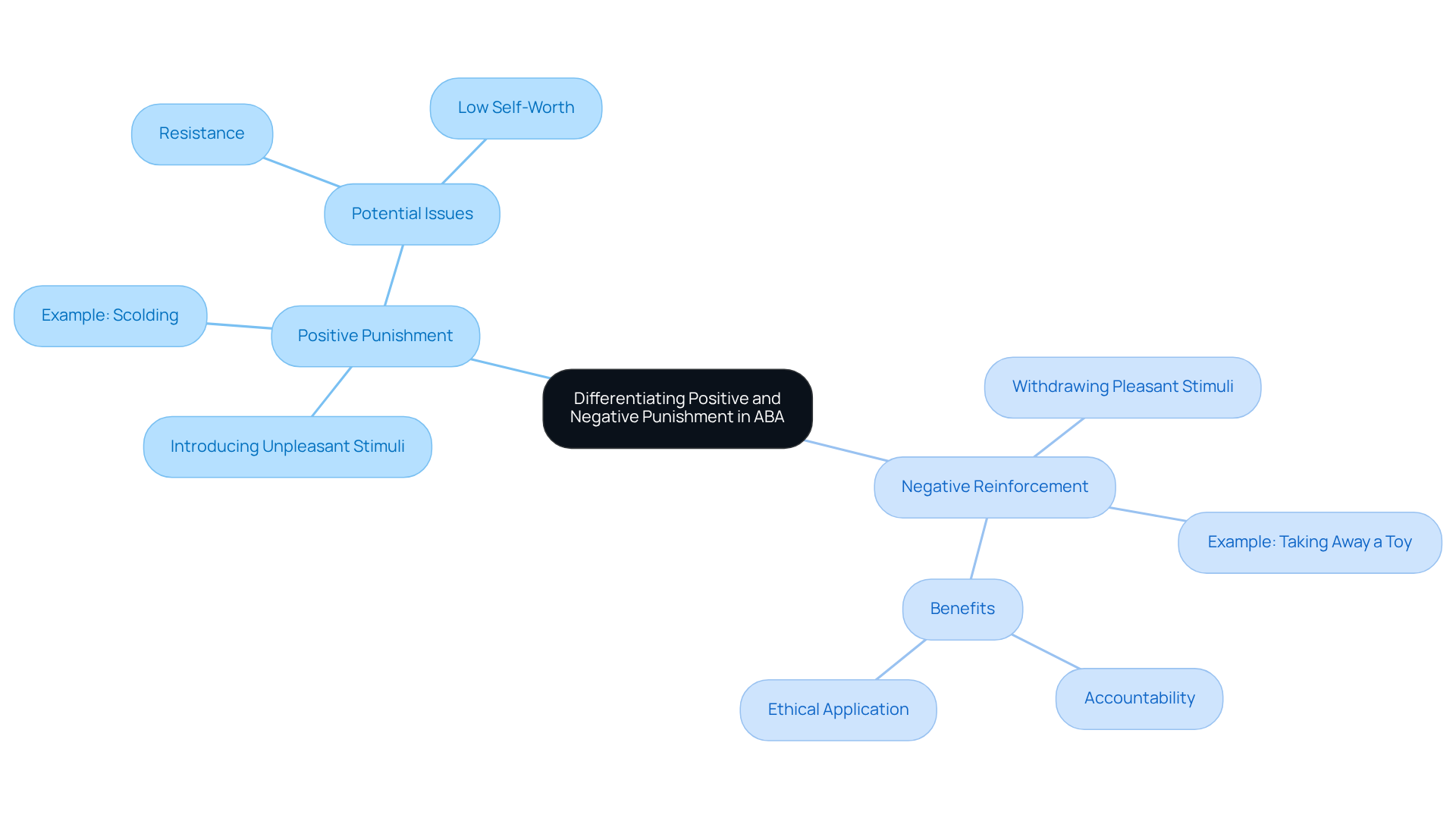
Negative punishment aba serves as a powerful tool in modifying behaviors by diminishing the frequency of undesirable actions. This approach, which utilizes aba, involves the removal of a preferred item or activity, potentially leading to a reduction in the behavior that triggered the consequence.
For instance, when a child loses access to a cherished toy due to misconduct, they may be less inclined to repeat that behavior. However, the effectiveness of negative punishment aba can vary; it is influenced by several factors, including the child's comprehension of the outcomes and the specific context in which negative punishment aba is enforced.
Research indicates that challenging behaviors often emerge when demands exceed a child's adaptive capabilities, thereby affecting their response to negative consequences. Experts in child psychology emphasize the importance of understanding the underlying causes of a child's behavior. As Rebecca Eanes aptly stated, "Children do not enter this world with bad intentions."
Furthermore, individual differences, such as a child's temperament and past experiences with discipline, can significantly impact the effectiveness of negative punishment aba. Recent case studies in Applied Behavior Analysis (ABA) therapy, including the token economy research by Cangi and Daly (2013), demonstrate that when adverse consequences are applied thoughtfully—considering these individual factors—substantial behavior change can occur.
Consequently, practitioners must meticulously evaluate these elements to ensure that negative consequences are implemented in a manner that fosters positive outcomes.
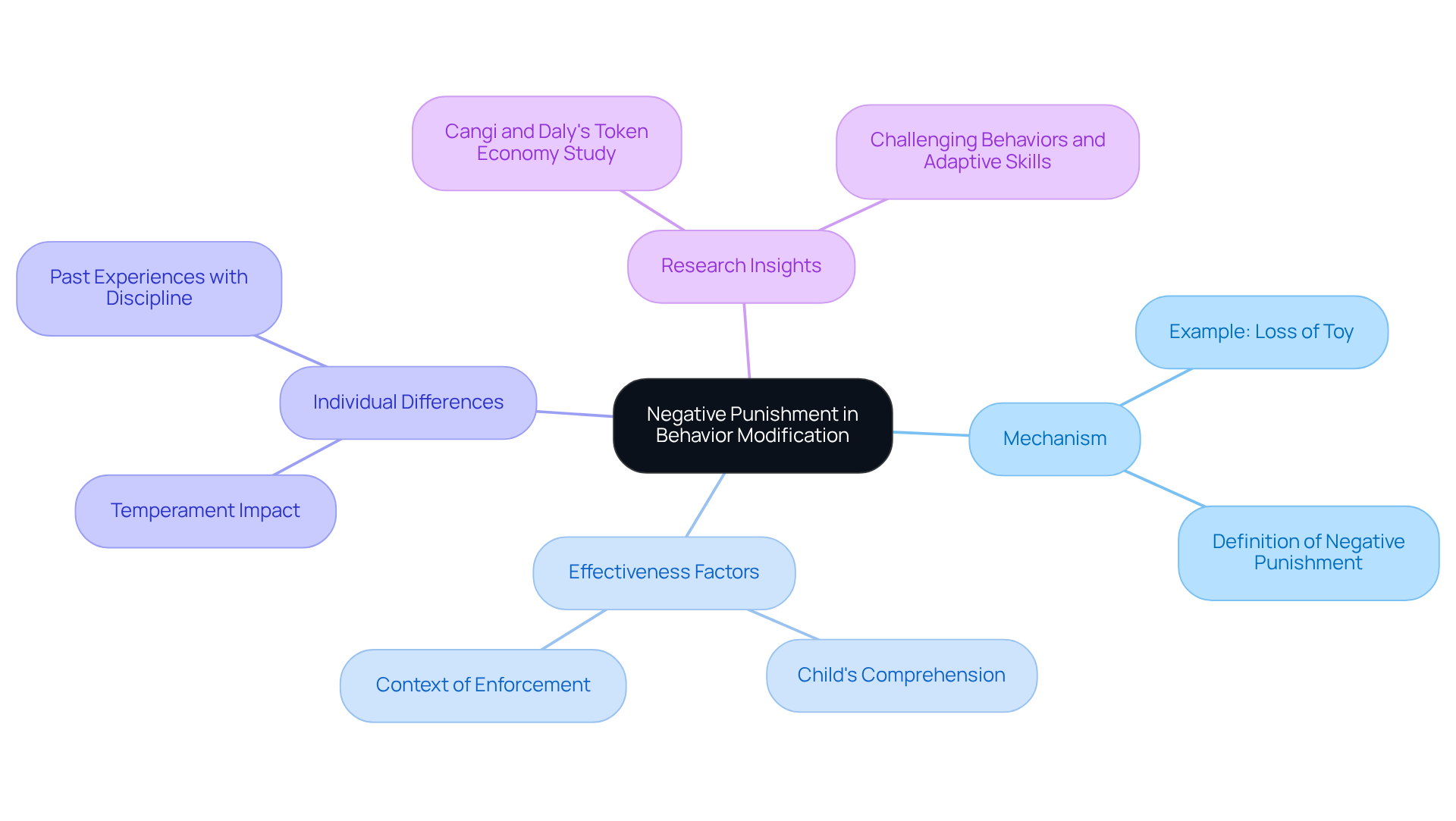
The application of adverse consequences in ABA therapy raises significant . Practitioners must ensure that these consequences are applied fairly and consistently, steering clear of excessive or harsh measures that may lead to emotional distress. Moreover, it is crucial to consider the individual needs and circumstances of each client; what may be effective for one individual could prove harmful to another. Adhering to ethical guidelines not only helps maintain a positive therapeutic relationship but also promotes the overall well-being of clients.
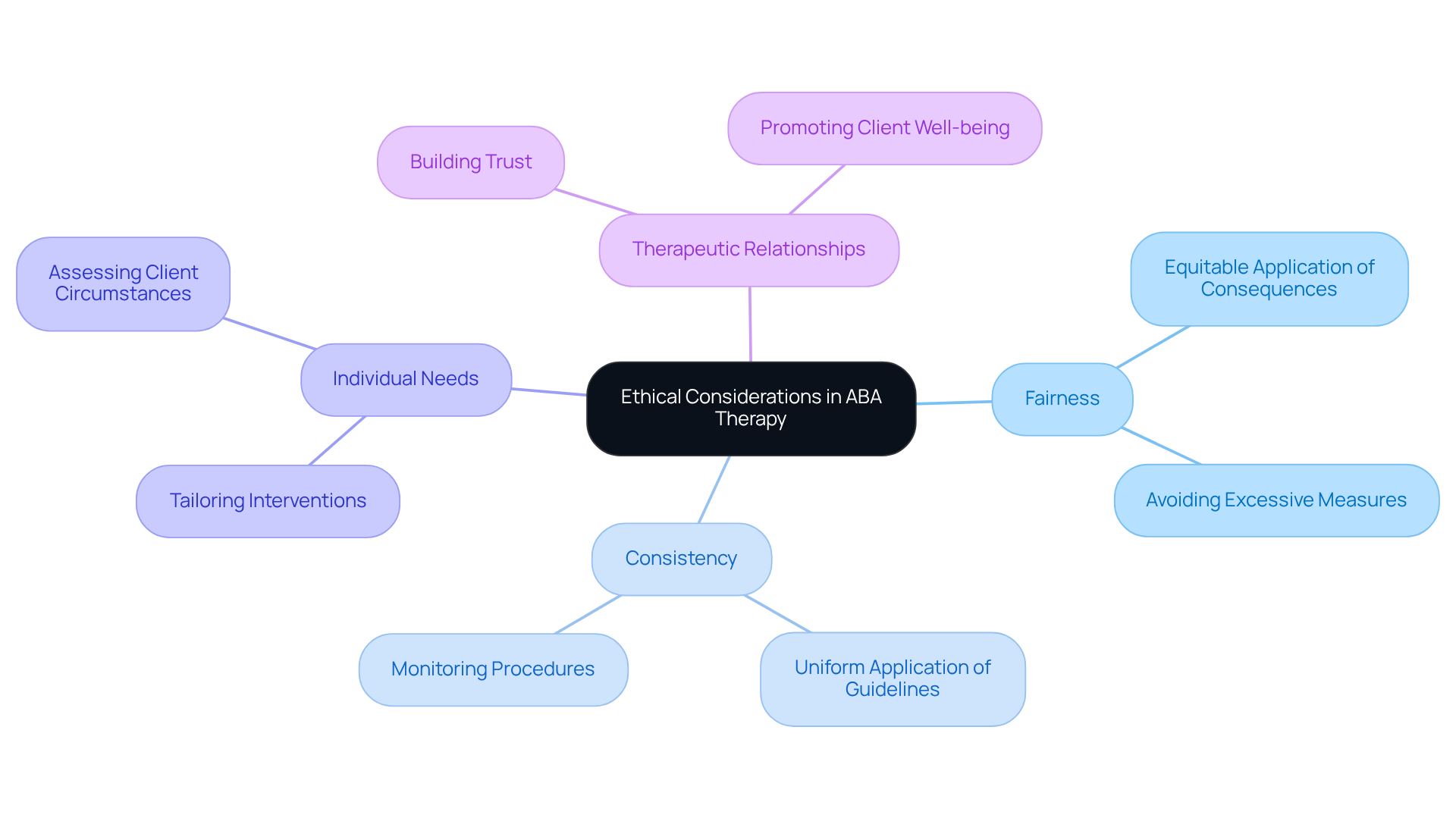
Negative punishment ABA techniques are crucial for effectively altering behaviors in therapy. Research indicates that these methods can reduce unwanted actions by up to 30% when applied consistently, particularly through loss of access strategies. For example, withholding a favorite toy when a child exhibits aggressive behavior can significantly decrease such conduct. Similarly, when a child fails to follow instructions reinforces the connection between actions and consequences. Additionally, withdrawing attention or praise during disruptive behavior aids in minimizing undesirable actions.
Practitioners emphasize that the effectiveness of negative punishment ABA is greatly enhanced when paired with positive reinforcement strategies, creating a more balanced approach to behavior modification. A case study illustrates this: a young child who lost access to a toy after a tantrum showed a notable decline in such outbursts over time. Experts stress the importance of clear communication and immediate application to maximize impact, ensuring children grasp the relationship between their actions and the resulting consequences.
However, it is vital to acknowledge the potential negative emotional effects of adverse reinforcement, including feelings of anger, anxiety, and learned helplessness, which can be linked to negative punishment ABA. Continuous oversight and adjustments are recommended to improve outcomes and encourage positive behavioral changes. By implementing these techniques thoughtfully, practitioners can foster a more effective therapeutic environment.
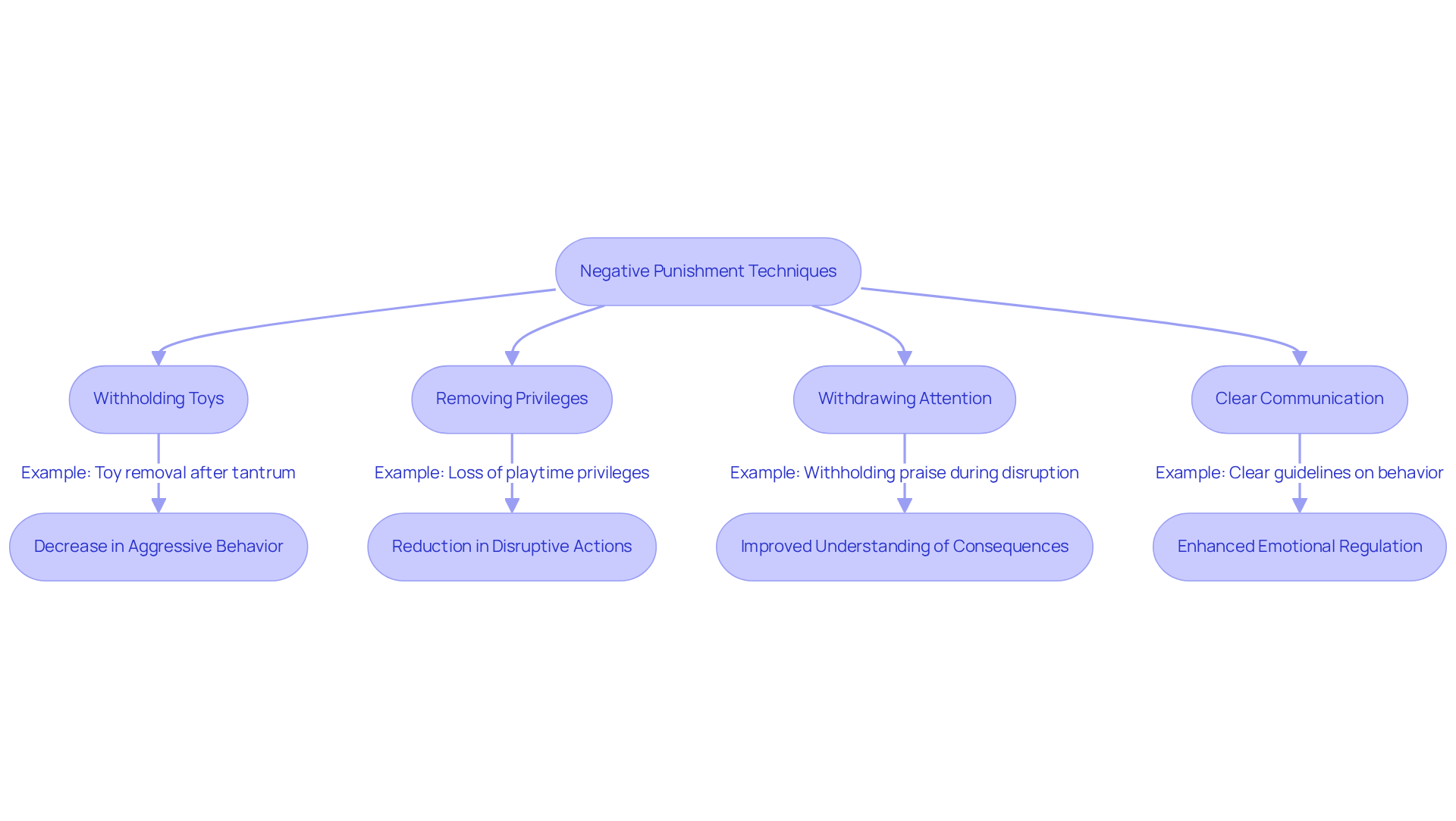
While can be effective, it may also result in unintended side effects, such as increased anxiety, resentment, or aggression in clients. Consider the implications: if discipline involves negative punishment ABA and is perceived as severe or unjust, children might develop negative associations with both the therapist and the therapeutic process. Practitioners must remain vigilant, monitoring clients closely and being prepared to modify their strategies should adverse side effects emerge. This vigilance is crucial for ensuring that the therapeutic environment remains supportive and constructive.
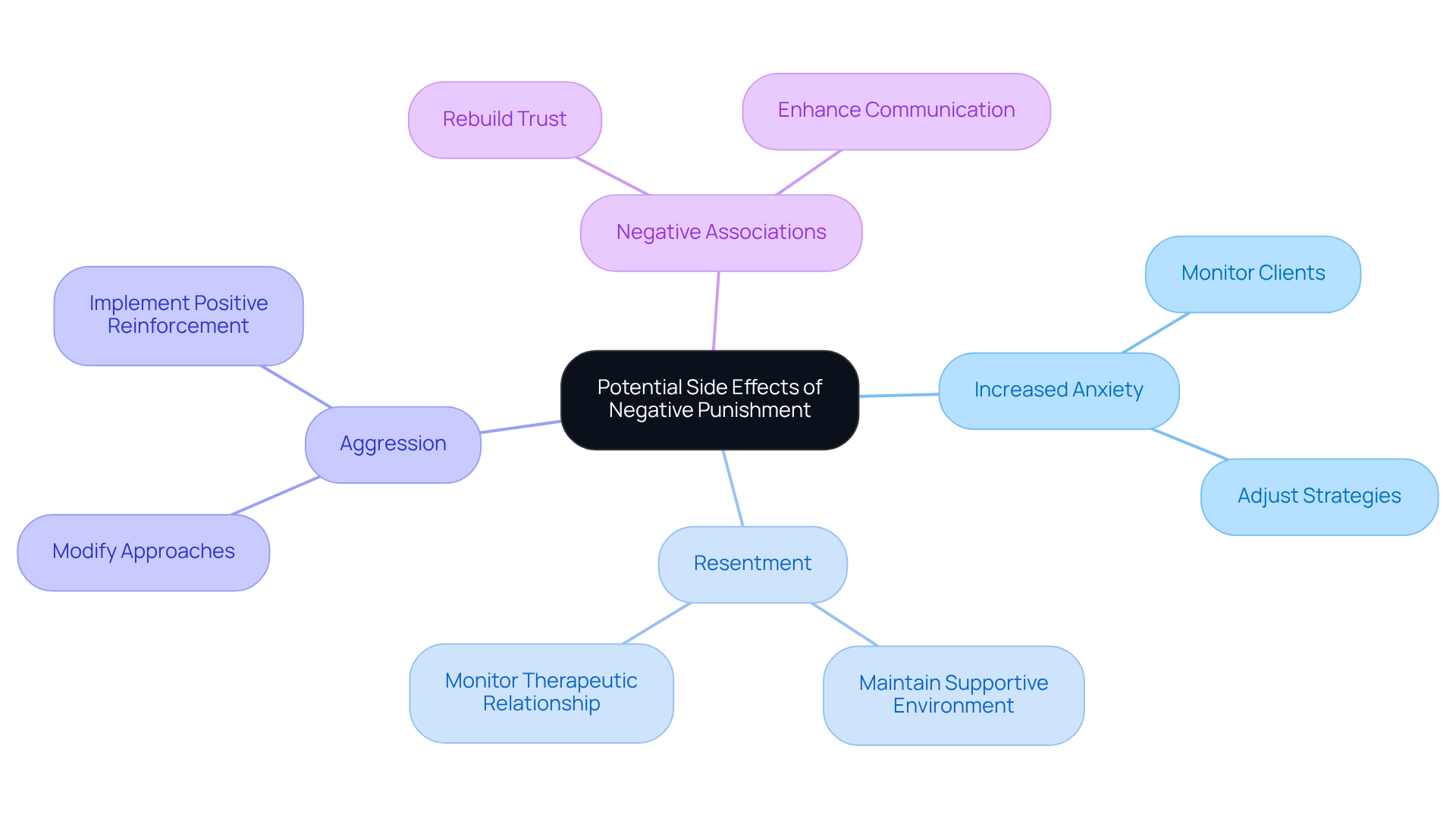
Balancing adverse consequences with positive reinforcement is essential for the effective modification of actions. Negative punishment ABA aims to reduce unwanted behaviors, while positive reinforcement encourages the recurrence of desirable actions.
Consider the example of a therapist who applies negative punishment ABA by removing a toy as a consequence for misconduct—this serves as an adverse consequence. Simultaneously, the therapist provides praise or rewards for appropriate behaviors, exemplifying positive reinforcement.
This dual strategy not only encourages a deeper understanding of behavior but also cultivates a .
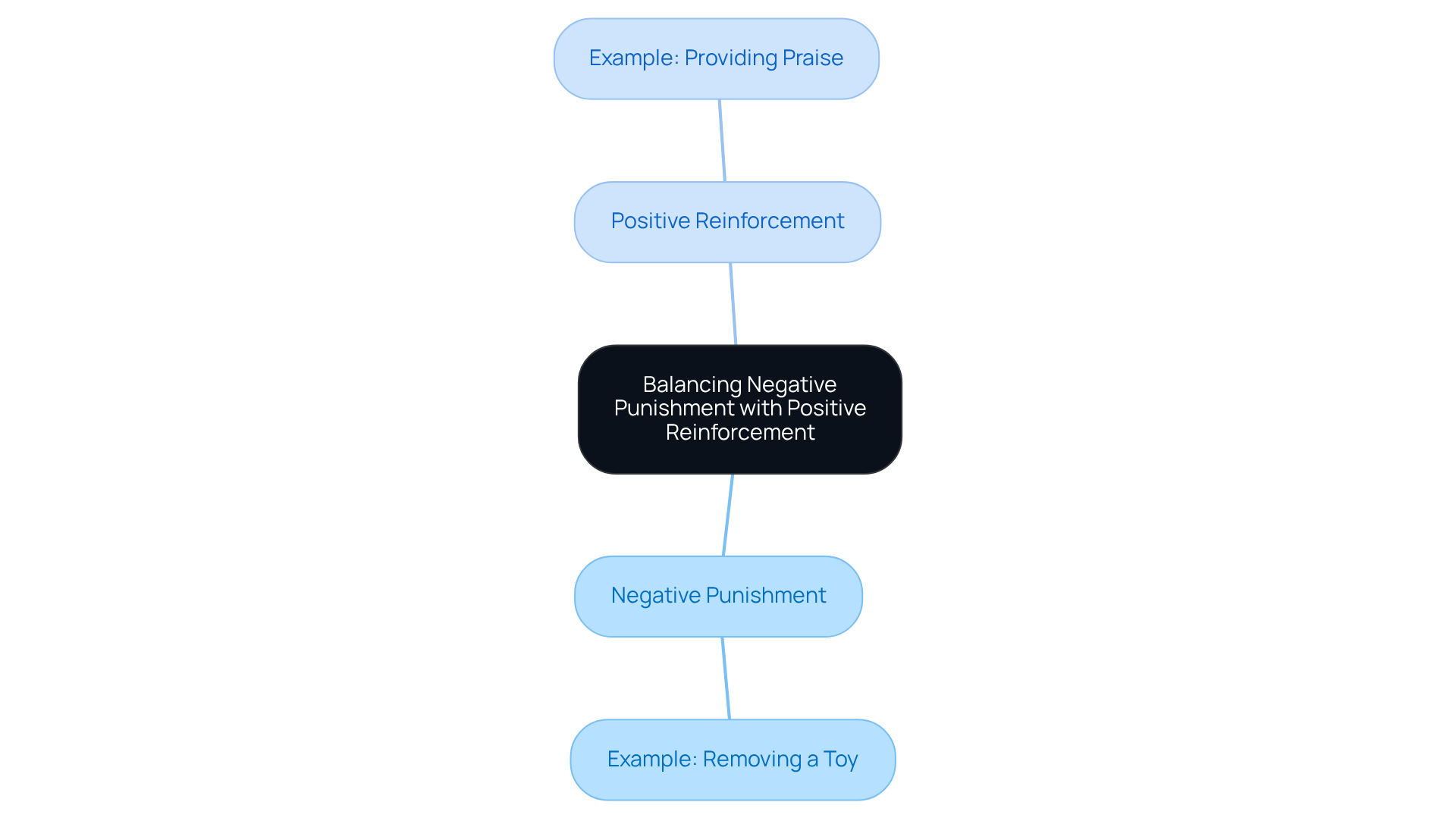
In autism support, the careful implementation of adverse consequences can serve as an effective strategy for addressing challenging behaviors. For instance, when a young person exhibits self-injurious behavior, a therapist may employ negative punishment by removing access to a preferred activity, such as playtime or a cherished toy. Other strategies may include time-outs or planned ignoring.
However, it is crucial to apply this method judiciously, in conjunction with positive reinforcement techniques. This ensures that the individual feels supported and understood throughout the therapeutic process. Practitioners must remain attuned to the unique needs of each person, adapting their methods to foster positive outcomes.
As specialists emphasize, the balance between consequences and reinforcement is vital to mitigate emotional distress and cultivate a constructive therapeutic relationship. Catherine Lord highlights that effective therapy should focus on a child's strengths while remaining vigilant to their emotional well-being, underscoring the importance of monitoring for signs of distress or aggression that may arise from disciplinary actions.
Furthermore, the ethical implications of employing negative punishment ABA in Applied Behavior Analysis therapy warrant careful consideration, as excessive punitive measures can lead to adverse side effects and undermine the therapeutic alliance.
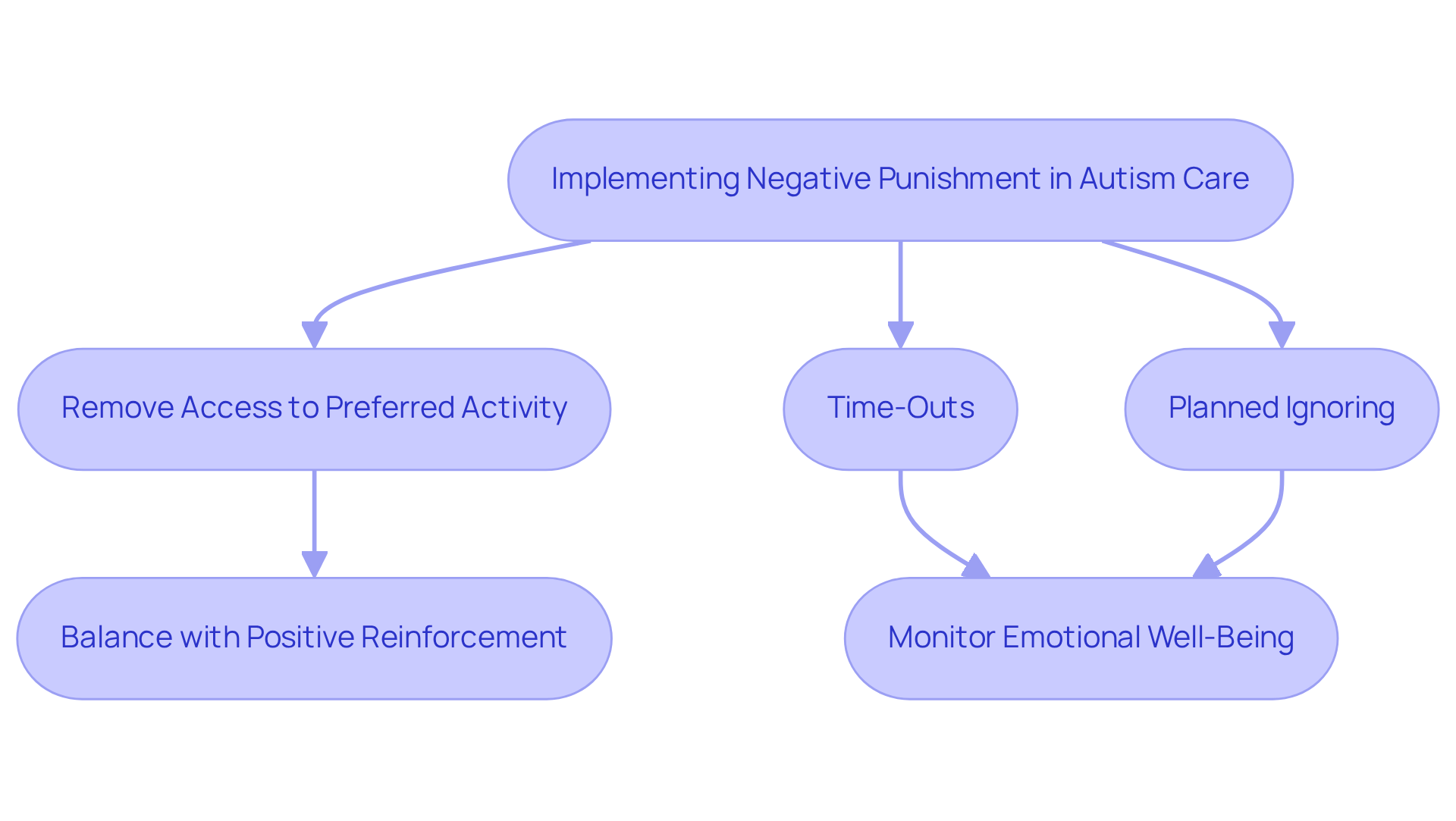
To effectively implement in therapy, practitioners should adhere to several best practices.
By following these practices, therapists can improve the effectiveness of their interventions while fostering a supportive and nurturing therapeutic environment.
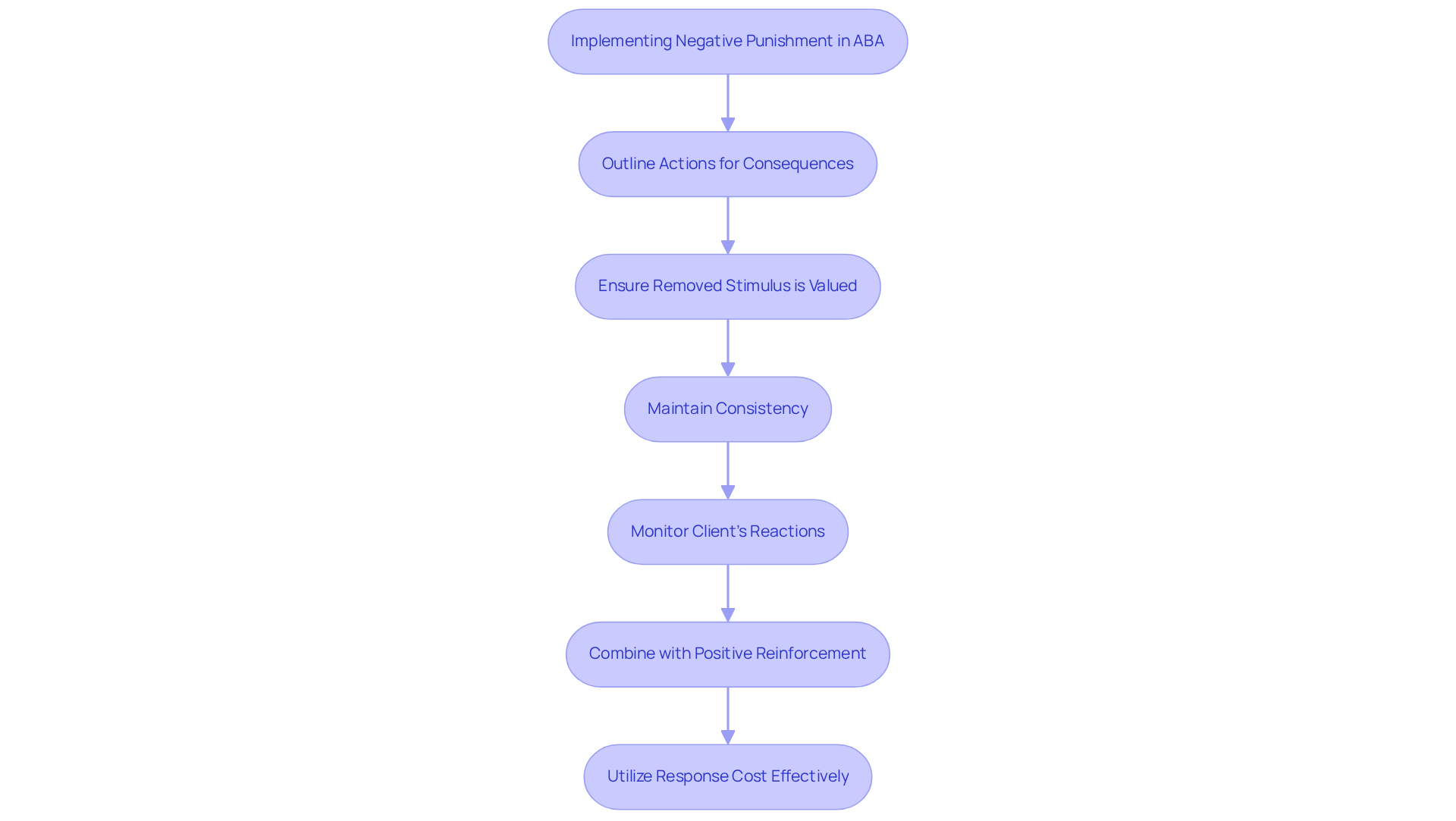
Negative punishment in ABA therapy serves as a crucial method for modifying behavior by removing a valued stimulus following undesirable actions. This approach not only aims to decrease unwanted behaviors but also highlights the importance of ethical implementation and the balance between negative consequences and positive reinforcement. As the field of Applied Behavior Analysis continues to evolve, understanding the nuances of negative punishment becomes increasingly vital for practitioners.
Key insights discussed in this article include:
The effectiveness of such methods can significantly vary based on individual circumstances, underscoring the necessity for a tailored approach that considers each child's unique needs and experiences. Furthermore, the importance of combining negative punishment with positive reinforcement strategies has been emphasized, as this dual approach fosters a more supportive therapeutic environment.
In conclusion, the thoughtful application of negative punishment in ABA therapy can lead to meaningful behavior changes when executed with care and consideration. Practitioners are encouraged to remain informed about best practices and ethical implications to ensure that their methods promote not only behavioral modification but also the overall well-being of their clients. By prioritizing a balanced approach, professionals can cultivate a therapeutic atmosphere that encourages positive outcomes and supports the growth of those they serve.
What is Hire ABA and its purpose?
Hire ABA is a dedicated recruitment platform that connects Board Certified Behavior Analysts (BCBAs) with job opportunities in the field of Applied Behavior Analysis (ABA) therapy, aiming to streamline the hiring process for both job seekers and employers.
Why is there a growing demand for BCBAs?
The demand for BCBAs is projected to surge by 25% by 2026, indicating a significant need for qualified professionals in the expanding field of ABA therapy.
How does Hire ABA assist job seekers?
Hire ABA provides personalized resume assessments and advanced job fit scoring to help candidates find positions that align with their skills, preferences, and desired locations.
How many job postings for BCBAs were available in 2023?
There were over 65,300 job postings for BCBAs in 2023 on the Hire ABA platform.
What is negative punishment in ABA therapy?
Negative punishment in ABA therapy involves the removal of a desirable stimulus following an undesired action to decrease the frequency of that action, such as taking away a toy when a child misbehaves.
What are some real-world applications of negative punishment in ABA?
Real-world applications include time-outs, where a child is removed from a rewarding environment due to misbehavior, typically lasting one minute for each year of the child's age.
How does negative punishment differ from positive punishment in ABA?
Positive punishment involves introducing an unpleasant stimulus to reduce an action (e.g., scolding), while negative punishment involves removing a pleasant stimulus to diminish undesirable actions (e.g., taking away a toy).
What are the ethical considerations in applying negative punishment?
The application of negative punishment must be assessed for potential negative consequences, and behavior analysts advocate for careful application, emphasizing the importance of reinforcing positive behaviors for long-term change.
Why is it important for professionals to understand the distinctions between positive and negative punishment?
Understanding these distinctions is crucial as each approach has unique applications and consequences for altering behavior, which can significantly impact therapy outcomes.
Our expert recruitment strategies and AI-driven sourcing ensure that you receive top-notch candidates quickly, without compromising on quality. Whether you’re looking for BCBAs, Clinical Directors, or RBTs, we’ve got you covered.